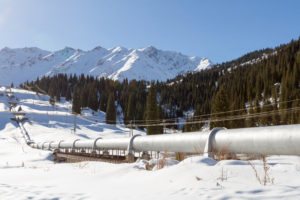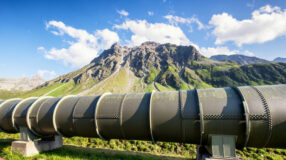
[Washington, DC, November 13, 2023] – The Staff Report on Winter Storm Elliott illustrates that members of the Interstate Natural Gas Association of America (INGAA) took decisive, real-time actions to maintain system integrity in the face of the significant challenges presented during the storm. Interstate gas pipelines rose to the occasion to prevent what could have been a catastrophic loss of natural gas and power to homes and businesses.
As staff of NERC and FERC explained, Winter Storm Elliott “was a supply shortage event for both the electric grid and the natural gas pipeline system.”
Over six days during the 2022 holiday season, extreme cold weather covered most of the eastern continental United States. This extraordinary event created record peak demand for natural gas and peak winter electric loads in each of the balancing authorities included in this report. While the electric grid and the natural gas pipeline system responded to that peak demand, NERC observed that natural gas production “rapidly declined,” “contributing to wide-area electricity and natural gas shortages.”
INGAA members acted aggressively to meet the challenge posed by Elliott – as noted in the Report. Staff observed that “all pipelines proactively managed and monitored line pack and system integrity” in advance of the storm and “used every tool to avoid disruptions in service” during the storm.
Our members were instrumental in preventing more adverse outcomes to both the natural gas infrastructure system and the power grid, and did so by using all possible tools to address the supply shortage caused by Elliott. “To meet confirmed nominations of customers, pipelines used line pack and/or gas from storage to try to cover shortfalls as much as possible,” the report explains. Data demonstrates dramatic declines in both line pack and storage inventories over the course of the storm, illustrating the lengths to which interstate pipelines went to keep gas flowing to customers that otherwise could not find gas.
Interstate pipelines’ actions “were successful at the onset of the storm,” but prolonged shortages and high demand caused an unsustainable imbalance as some customers took significantly more gas from the pipeline than they added to it. The imbalance caused pipeline pressures to drop substantially, and, because line pack and storage were low, forced operators to make difficult decisions to implement scheduling restrictions and reduce previously confirmed nominations. When line pack and supply are low, shippers cannot take more gas than they supply without either stealing someone else’s gas or causing pressures to drop to dangerously low levels such that the pipeline system is at risk of collapse.
The INGAA membership used all possible flexibility and storage withdrawals to deliver as much natural gas through the system as possible – and the Report confirms that.
The Report includes several recommendations to improve coordination among the entire gas supply chain and with electric utilities, including a NAESB effort to enhance situational awareness of production losses and when pipelines’ efforts to address those losses become unsustainable. INGAA’s members look forward to working with stakeholders to identify potential improvements in this area.
But more communication will not solve the problems created by extreme weather like Winter Storm Elliott. The United States needs more natural gas pipeline capacity to maintain a resilient system that affords homes and the power grid access to multiple sources of this critical fuel. INGAA supports Staff’s recommendation to analyze what additional infrastructure the United States needs to meet the country’s demand for natural gas and stands ready to build the infrastructure necessary to reliably, safely, and affordably deliver that natural gas that keeps the lights on now and in the future.
###
INGAA represents the U.S. natural gas pipeline industry. INGAA’s members deliver clean, abundant, affordable natural gas throughout North America and operate approximately 200,000 miles of pipelines that serve as an indispensable link between natural gas producers and consumers.







